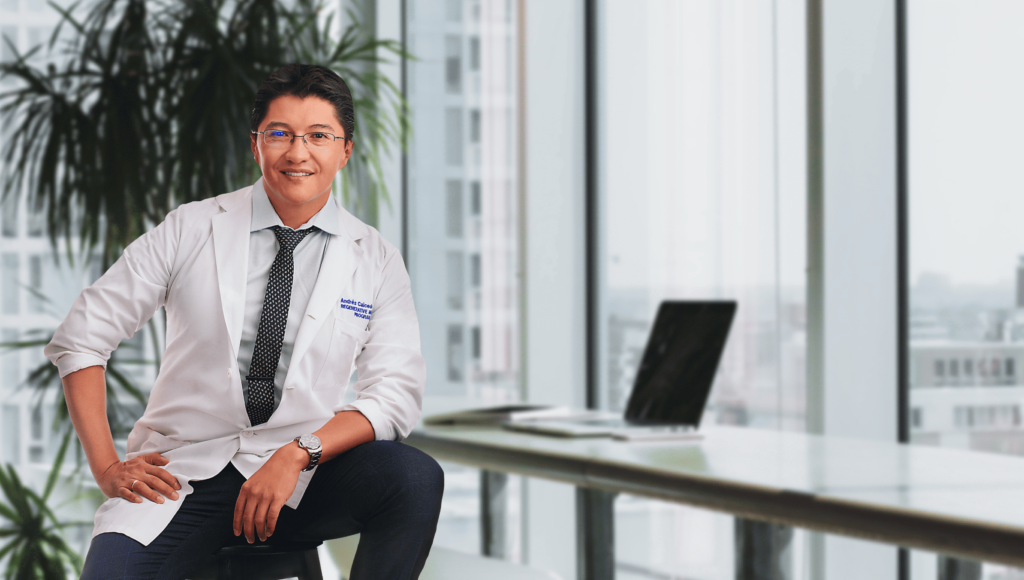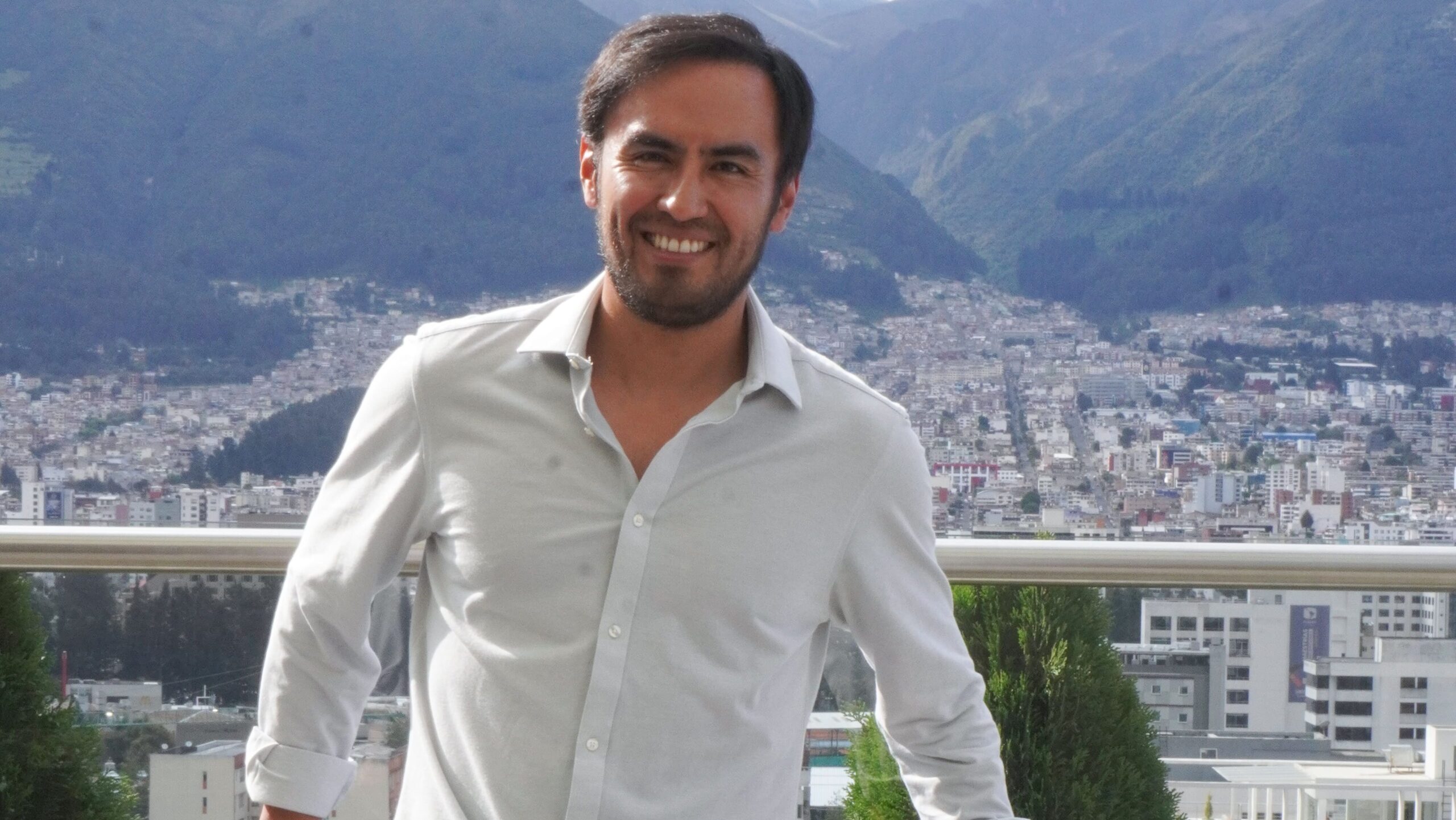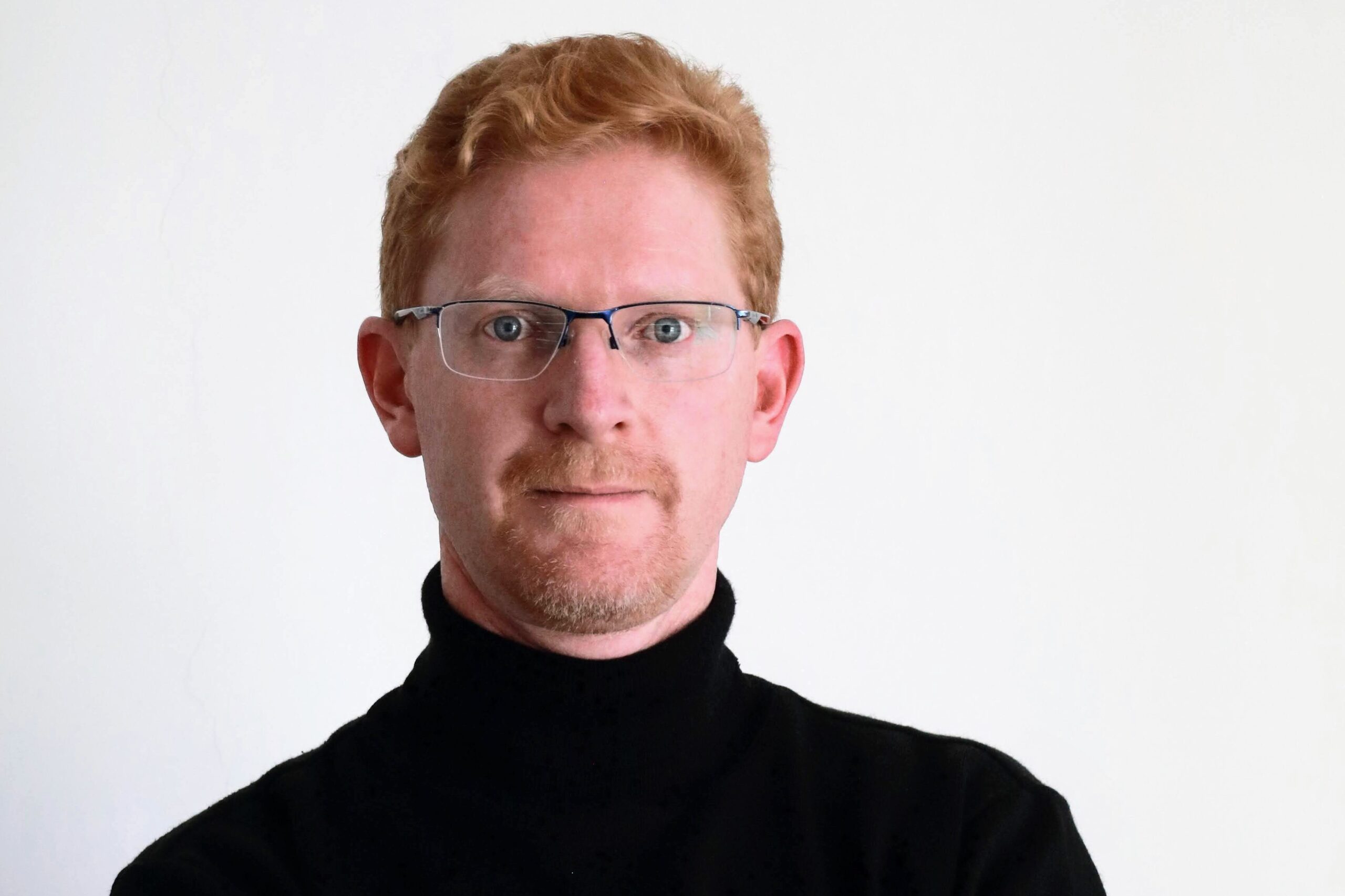
Andrés Caicedo, Ph.D. – USFQ
Discovery, invention and innovation are interconnected and depend on each other to become reality. These three elements arise from curiosity, non-conformity, criticism and the great creativity of the human spirit. Since its origins, human beings have embodied a great motivation to know the truth, understand the complex mechanisms of the universe, know how they work, generate something that did not exist, something original, or implement and improve concepts that are key to the infinite advancement of humanity in all disciplines. We catapult ourselves from the shoulders of giants into the future, always learning, and where opportunity, context, colleagues and friends favor the success of the materialization of dreams.
I am Andrés Caicedo, Professor and Researcher at the School of Medicine of the Universidad San Francisco de Quito, USFQ. On this occasion, I want to convey to you how our first invention patent application, “Method for the preparation of an umbilical cord extract”, was generated through a series of key events, with the support of great colleagues and also as a product of the advances of the innovation ecosystem at USFQ and Ecuador.
I specialized in biomedicine and, more precisely, in understanding how cells communicate with each other. Cellular communication is the basis for the generation of multicellularity, tissues, organs, the organization of our body and the maintenance of health. Within this field, there are many questions to be answered and possibilities for the generation of inventions and innovations, especially by understanding the factors that are secreted by cells and that have the potential to repair or regenerate damaged tissue, fight disease and live. more years with health.
Montpellier, France, January 3, 2012, Institute of Biotherapies: We designed with Marie-Luce Vignais, my PhD mentor, some of the first microscopy experiments of my thesis, where we sought to understand how cells could generate resilience to stress and damage between them. After a few years, we observed that mesenchymal stem cells (MSCs) transferred mitochondria (energy-producing organelles) and other factors to other cells, in a process beneficial to maintaining tissue function. This new principle facilitated the discovery of additional processes on the transfer of mitochondria from MSCs, with profound implications for health. The MSCs we used were isolated from the bone marrow and the umbilical cord, the latter being the ones that had extraordinary regenerative effects. This experience, in the study of cellular isolates, is just one example of how moving from discovery to invention facilitates the development of unique "know-how" and multiple applications in the future.
After the wonderful experience of completing my PhD in France, in 2016 I decided to return to Ecuador and work at USFQ, where, together with a great team, we founded the field of regenerative medicine in the country. This led us to study the application of MSCs, their mitochondria and other factors to repair cellular damage and combat aging.
Quito, Ecuador, June 5, 2017, USFQ School of Medicine: At that time, we had just developed the cell culture area, a unique space in the country to develop therapies and generate discoveries and inventions. Luis Eguiguren, colleague and friend at the School of Medicine, doctor and professor, called me to a meeting. Luis told me: «I present to you Edwin Ocaña, Pediatric Surgeon. You know that he uses the umbilical cord to treat children with Giant Omphalocele; Look at the excellent results he has obtained with his natural dressing. Edwin covered an open gap in the abdomen with the umbilical cord, which facilitated its regeneration. To this I mentioned: «Thank you, Luis, for introducing us to Edwin. Without a doubt, it is a very interesting fabric. "I worked with MSCs originating from this tissue and these cells have incredible cell regeneration properties." Luis mentioned: «We have to study it more. Let's get together with Michelle Grunauer (former Dean of the School of Medicine), who will help us understand future applications. Thus we formed a great work team with Luis, Michelle, Edwin and other colleagues at USFQ to understand how this fabric can be used in multiple applications. The idea was generated to write an article and study the umbilical cord in depth.
Marseille, France, October 18, 2019: During a trip to strengthen networking between Ecuador and France, I wrote to Luis and Michelle the following: «I have already sent our article 'Use of Human Umbilical Cord and Its Byproduct in Tissue Regeneration' to Frontiers (Velarde et al. 2020) . Super good news and thank you, Luis and Michelle, for sharing so many experiences! We have made great progress together with Francesca Velarde, our trainee in the laboratory, who has been key in the development of this and several projects. I believe we have a novel method that has allowed us to maintain the regenerative properties of the cord; the extract works very well. I will speak with other colleagues upon my arrival in Montpellier to evaluate the scope of our work; "We could generate a patent."
Quito, January 6, 2020: At that time, I had the opportunity to meet Gabriel Bermeo, with whom we had previously collaborated when he worked at SENESCYT. “How great that you come to work at USFQ!” I told him. "I believe that with your arrival to the team the Innovation and Patent Ecosystem will be greatly strengthened." I spoke with Diego Quiroga (current Rector of USFQ and former Dean of Research) about our work, which could be patented, but we need several elements to achieve it. Gabriel told me: "With pleasure, Doctor, we are here to help."
From that date until July 7, 2023, we worked hard to demonstrate the potential of our patent application and, as an inventor, support the formation of a team that strengthens innovation at USFQ. During that time, we collaborated with Valeria Ochoa, a prominent scientist, and María Laura Fuenzalida, an excellent lawyer. Together with the USFQ and CEDIA, we achieved that in the first call of the Registra Fund we were given the opportunity to generate an application for an invention patent, the first for the USFQ and for Ecuador in the field of regenerative medicine. We capture six years of development in this patent application, in which each member of the team contributed to this achievement.
In May 2023, during the ISCT (International Society for Cell and Gene Therapy) annual meeting in Paris, I was able to interact with esteemed colleagues who put me in touch with Luvigix, allowing me to discuss our research at USFQ and specifically about the patent application to generate umbilical cord extract for regenerative purposes. This active participation in societies opens the doors to generate networks that facilitate collaboration and the promotion of our work. On August 18, 2023, USFQ signed its first license agreement for a patent application with Luvigix for our method. This achievement was possible thanks to the synergy, opportunities, context and support of colleagues and friends who favored the materialization of these projects.
On January 18, 2024, we managed to publish our patent application in the PCT, facilitating its arrival in multiple markets and concretizing the hard work of the researchers, USFQ, CEDIA and our excellent collaborators. Today, we continue to move forward: we discover, invent and innovate. There is no final goal, only the path of research with the goal of returning health to people in need. Being an academic, being able to do research, teach classes, generate innovation and encourage contact with the company and develop it, are enriching activities and, like many colleagues, we feel the satisfaction of moving forward and not stopping in the face of adversity. If there are no big dreams and objectives, we do not progress. On this path, each student, colleague, friend and mentor contributes to making each step an achievement. However, there are multiple aspects that make up an individual, and a life rich in experiences, exploring fields beyond science, such as film and other arts, promotes the development of big ideas and thinking outside the box. We must not forget the family, which accompanies the countless dawns to deliver work on deadlines, and which, when talking with many colleagues, is always a fundamental axis for all facets of the researcher and inventor, roles that many play today. the USFQ and in the country.



